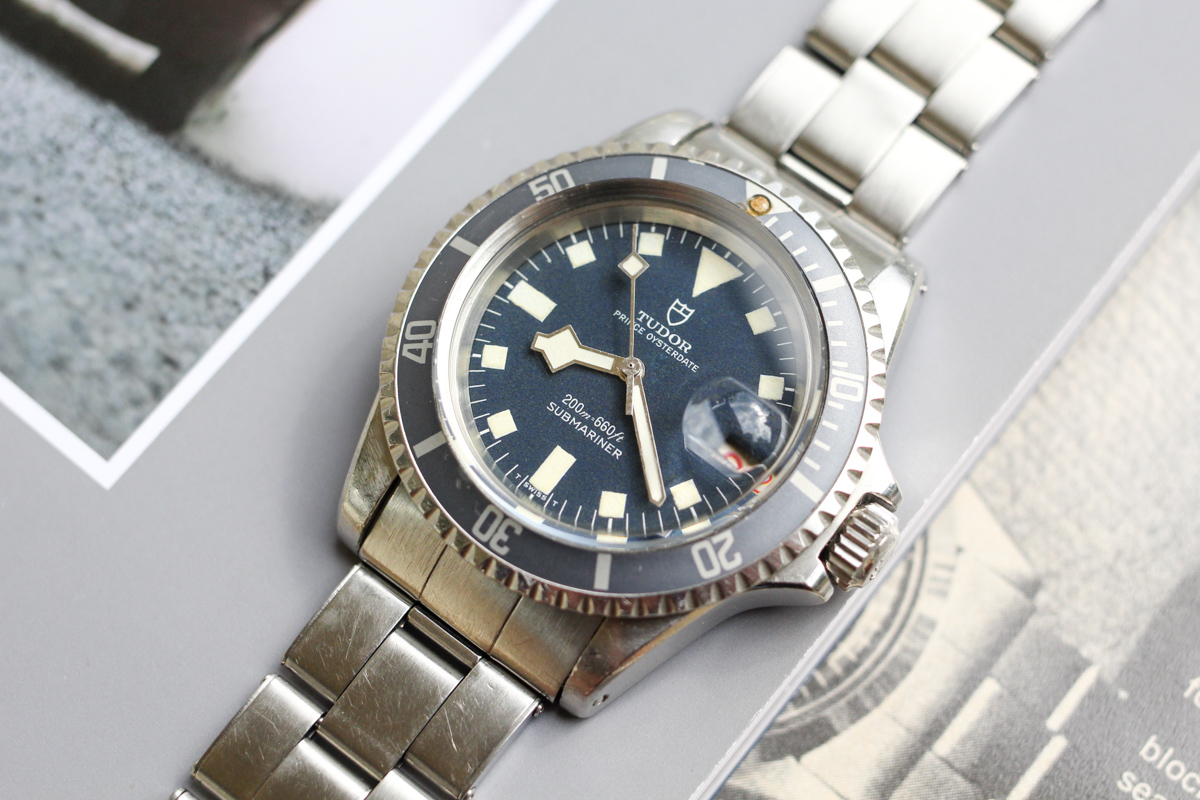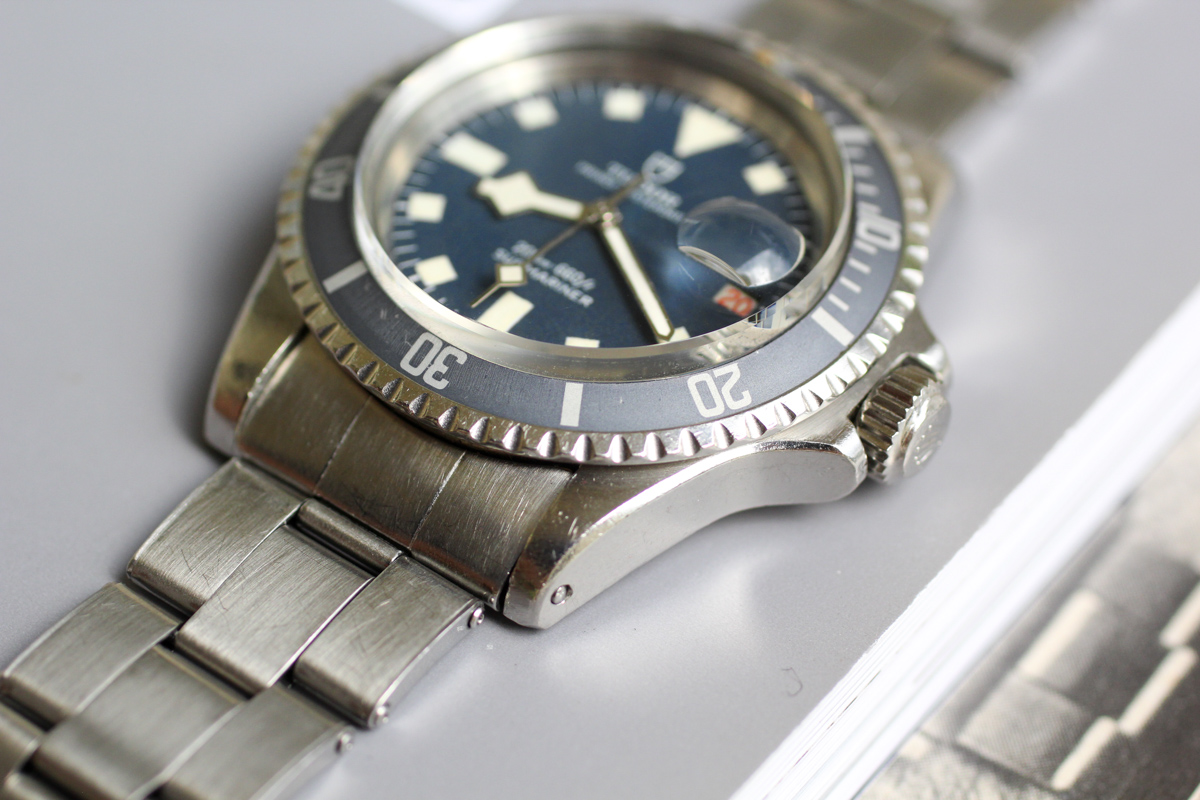Understanding the Reference
There is little debate that the “Snowflake” Submariner is the most important watch that Tudor has ever released. The distinctive design was introduced in 1969 and marked the first major stylistic departure from its big brother, the Rolex Submariner. Decades later, the snowflake design would become the foundation of Tudor’s return to North American prominence, imbuing the original references from the 1960’s with even more importance in the collector community.
Snowflakes had a continuous production run of roughly a decade, initially appearing as the reference 7016/0 and 7021/0 (the 7021/0 included a date feature with a “roulette” date wheel that alternated red/black), and subsequently the references 9401/0 and 9411/0, which were introduced in 1975 and featured newer movements. These snowflake references also became the most widely-distributed military dive watches ever produced by Tudor, as Snowflakes graced the wrists of military divers all the way from France to Jamaica.

If you’ve followed the evolution of my collection over the years, you’re already aware that the Tudor Submariner has been a staple. My first vintage watch purchase (in 2013) was a reference 7016/0 Submariner with “Mercedes” hands, and in the years since, I’ve been fortunate to have owned a 7016/0 Snowflake, a reference 94010 Canadian MilSub, and both the black and blue variations of the “lollipop” reference 76100.
As I ponder my long-running love for these watches, it’s clear that I’ve always been drawn to the design deviations that separated the Tudor and Rolex Submariners. That isn’t to minimize the importance of the Rolex Submariner – it was an industry-changing icon that still holds aspirational appeal to nearly all watch lovers – but in my opinion, Rolex’s iterations of the Submariner fell victim to their own iconic lineage. To emphasize this “design victimization,” scroll through this Reference Points by HODINKEE, which chronologically compiled every reference of the Rolex Submariner.
Yes, there were some (extremely rare) Submariners that featured 3-6-9 “Explorer” dials, and yes, gilt dials create a very different effect in the metal than later matte dials, but the side-by-side picture below compares the earliest known Submariner (a reference 6536 from 1956) with the last no-date Submariner (a reference 5513 from the late-1980’s). Little freaky, right? They are almost identical after 30 years, which is a testament to the strength and timeless nature of the Submariner’s initial design.
The purpose of this digression isn’t to denigrate avid collectors of vintage Rolex Submariners, but rather to explain why my interest drifted towards the Tudor side of the Submariner spectrum. Tudor was able to package the Oyster case and bracelet (perhaps the best pairing ever made) with more creative riffs on the traditional Submariner and dive watch design, creating a unique and endlessly interesting niche. For me, this is what makes it possible to own so many generations of the Tudor Submariner without feeling like you’re buying the same thing over and over.
The Story Behind My Tudor “Snowflake” Submariner
One of the most consistent dopamine hits for a vintage collector is seeing a coveted watch surface on eBay with poor photos (though admittedly, this seems to happen less and less as time goes on). For those with a sharp eye and a gambler’s stomach, a bidding war can erupt in an instant, which was the case with this watch.
In the summer of 2018, an estate picker in California listed a blue Snowflake that immediately stuck out to me. As with many other Snowflakes, the lume had fallen out of the distinctive hour hand at some point over the years, but the rest of the watch remained in terrific condition. Having caught the auction in its infancy, I added the Tudor to my “Watch List” and began the week-long wait until auction’s end.
Bidding was strong in the early going and it continued to climb towards a fair market value over the ensuing days. As the auction began marching to its conclusion, I started to question the maximum bid that I had entered. Blue-dialed, first generation Snowflakes in excellent condition seldom appeared “fresh to market” and if I let this example slip through my fingers, who knew when the next one would appear. Emboldened by the ultimate enabler, scarcity, I increased my bid limit and crossed my fingers.
If you’ve ever placed a snipe bid for an eBay auction, you know that the scariest two seconds of your day are the web page refresh between “0:01” on the auction timer and the landing page that shows the final price. Many times, I’ve assumed that my bid won, only to see on the landing page that someone had outbid me. In this case, the landing page appeared after that agonizing second and displayed bold, green text that congratulated me on a hard-fought victory. I had prevailed in the end, though I had paid a near-market price for a watch that still needed hand repair and a pricey servicing. I knew it was the right decision deep down, but the full price left room for a sliver of doubt.
A few days later on a warm summer afternoon, the FedEx box arrived and I unwrapped my filthy treasure. As I did so, any nagging doubts were quickly erased. The dial was fantastic, the case still retained its wide chamfers, and the bezel had faded to a ridiculously beautiful hue. As you can see below, this was exactly what collectors dream about with “fresh to market” finds.
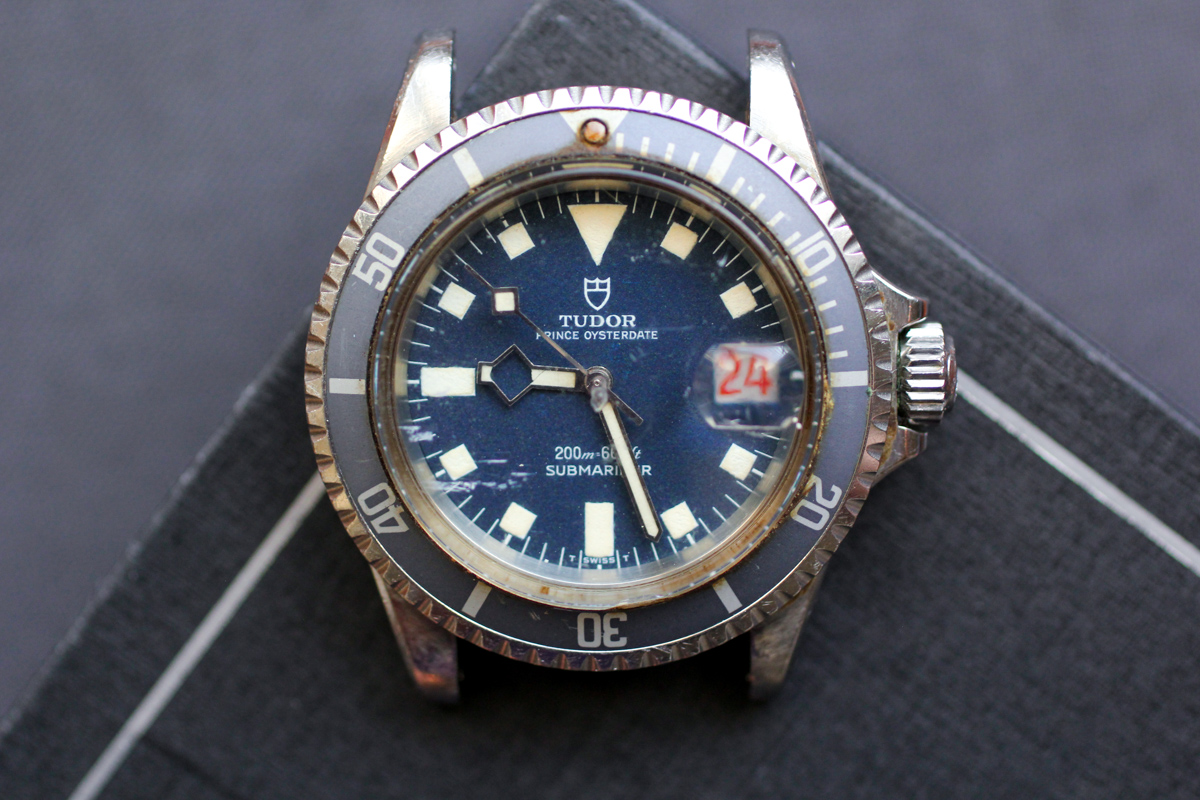
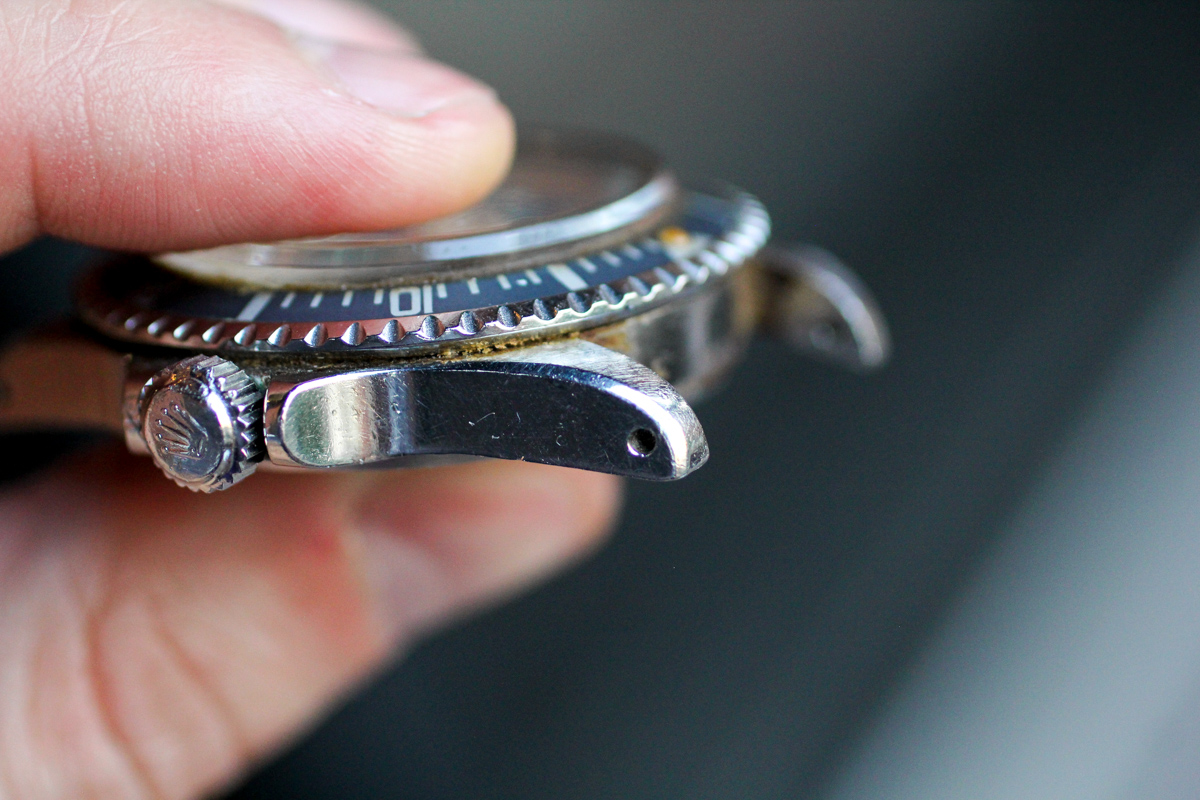
When it comes to servicing and repairing hands or lume plots on rare watches, the old adage “you get what you pay for” is the first thing that comes to mind. There is a short list of true, modern day artisans in this niche, and after receiving the watch, I wasted no time in shipping it off to my preferred watchmaker for a luxury spa visit. A couple months later, the watch returned home and I was able to strap it to my wrist for the first time, admiring how spectacularly the watch had cleaned up.
The Nitty Gritty
The Snowflake Submariner was produced for over a decade across two references. The first of which, the reference 7021/0, was not dissimilar from its successor (the reference 9411/0), but to discerning Tudor collectors, there are a few notable differences between the two. The most obvious of these differences are: i) the 7021/0 features a “roulette” date wheel that alternates between red and black text each day, and ii) the chamfers on earlier 7021/0 cases are wider than the 9411/0, which is also observed across the Rolex Submariner range over that same time period.
A less obvious difference between the two references is that 7021/0 dials tend to be lighter in shade and can even show green-ish flecks under a loupe (see macro photo below), whereas the 9411/0 dial is a darker shade of blue. Some dealers and collectors refer to these as “confetti” dials, though it’s often hard to see this level of detail without magnification.
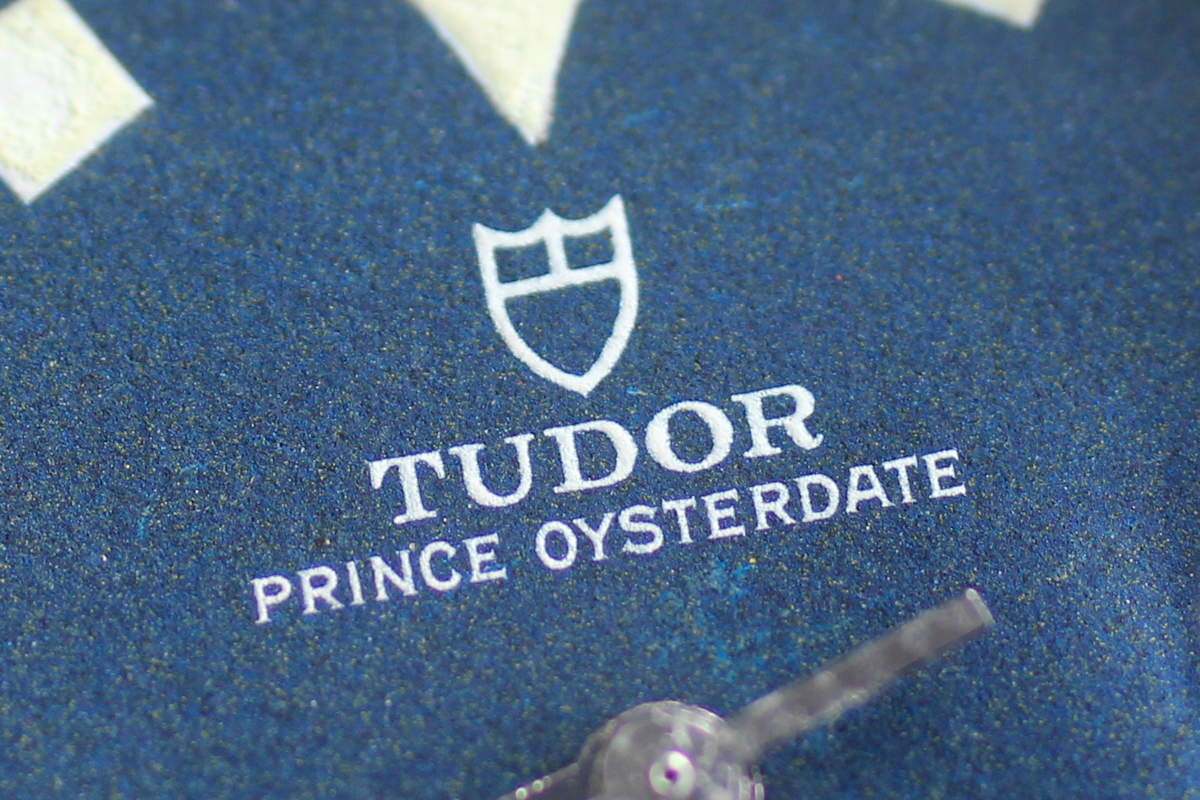
As mentioned above, this watch was appealing to me due to it’s unpolished case, strong dial, and its general lack of preparation prior to the sale. As distinctive as the Snowflake handset may be, the lume in the hour hands was quite prone to cracking and failing over the years (similar to Rolex Milsubs with “sword” hands), and though I would have preferred that the handset was intact, it was not a dealbreaker to me. In fact, my other blue Tudor Submariner “lollipop” was an eBay find that also required a hand restoration. When valuing this example against the broader market, the hand re-lume will be worthy of a slight discount, but I still consider this to be a worthy example of an “Excellent” condition 7021/0 Snowflake.


